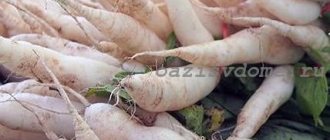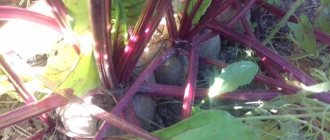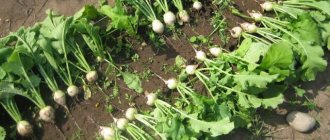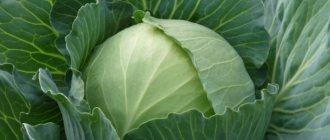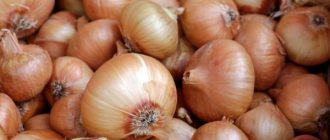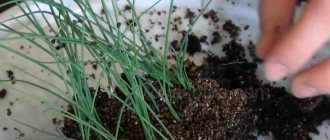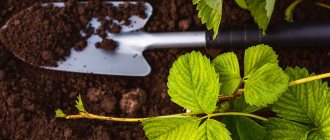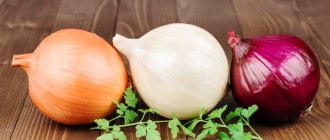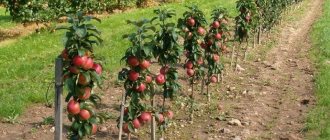The timing of harvesting cabbage depends on the variety, climatic conditions, and growing purposes. Early and mid-ripening varieties are planted for use in summer and autumn, and late-ripening varieties are planted for long-term storage. Only fully ripened heads of cabbage are stored for a long time, so you need to remove cabbage from the ridge and put it into storage at a certain time. If you cut it down early, it will not be stored well; if you leave it in the garden bed, the heads of cabbage will crack. You can choose the right time using the lunar calendar, which reflects the relationship between the rhythms of the plant and the movement of the Moon.
Signs of cabbage ripeness
There are two ways to determine the ripeness of cabbage. Pay attention to external signs. White cabbage, which is fully ripe, has a dense, tight head. If you try to squeeze it with your palms, there will be no crunching of the leaves. The sheets covering the forks should have a bluish color. For ripe cabbage:
- the head of cabbage is dense, and the lower leaves have turned yellow;
- the surface is shiny and smooth.
They look at the timing of ripening. According to early maturity, cabbage can be early, medium, or late. Based on this, cleaning activities are planned.
Let's look at each type of variety:
- Early. This type includes the varieties June, Hybrid Transfer. The product is grown to be consumed fresh in the summer. You can ferment it. Storage averages 2 months. Later it will start to deteriorate. From the moment of sowing to full ripening - about 90 days. The harvest is harvested in late June.
- Mid-season. Varieties - Glory, Merchant's Wife, Gift. Suitable for use in salting. Storage does not exceed 5 months. The heads of cabbage are distinguished by their juiciness and elasticity. Harvesting begins in September, 140 days after planting.
- Late. This includes varieties: Amager, Kryumont, Zimnyaya Gribovskaya. The heads of cabbage are dense and low in juiciness. The product is not able to release a large amount of juice, and therefore it is not salted. Thanks to good density, storage is long. If optimal conditions are maintained, forks can be eaten for 9 months. The quality will not be lost. Harvest 150 days after sowing. It is advisable to start in October.
The product will be stored well if you follow the advice on collection and preparation for placement in the cellar.
How to tell if cabbage is ripe
The first and most important rule for harvesting cabbage is timeliness. Only ripe, fully ripened heads of cabbage can be collected.
When the cabbage is mature and suitable for harvesting, then:
- The head of cabbage reaches the size and color corresponding to the characteristics of the variety.
- Cabbage heads stop growing.
- The lower leaves of the plant begin to coarse, turn yellow, and fall off.
- The head itself is dense, difficult to press, and heavy.
If you harvest cabbage later or earlier than its ripening date, you are unlikely to get a good harvest for storage. Overripe cabbage begins to crack, and the “heads” themselves become deformed. The action of the sun and moisture is detrimental to ripened heads of cabbage, because these factors support the processes of decay and proliferation of pathogenic bacteria. However, experts point out that in the case of cabbage it is better to “overexpose than underexpose.” You can harvest slightly overripe cabbage if there are no damage or obvious defects on it. But it’s not worth it if it’s not ripe, because it will begin to wither much sooner, and the shelf life will be significantly shortened.
If overripe heads of cabbage are slightly cracked, but otherwise not spoiled, great, no need to throw them away! Such heads can be safely used for food - for borscht or salads. It is not rational to store them - due to the damaged base, they will begin to wither very quickly.
Cleaning dates according to the lunar calendar
The lunar calendar is a type of calendar based on the period of changing phases of the Moon. Many gardeners use it for various agricultural work. With its help, favorable days are determined not only for sowing seeds or planting cabbage seedlings in open ground, but also the dates when it is best to harvest. When to harvest cabbage from the garden for storage for the winter in 2020 (optimal days of the month):
- June – 24-25;
- July – 4-8, 14-15, 21-22;
- August – 1-2, 4, 10-12, 13-14, 28-29, 31;
- September – 3-8, 13-16, 24-28;
- October – 3-5, 11-14, 28-31;
- November – 1-9, 18-21, 25-30.
Unfavorable days:
- September – 1-3, 16-18;
- October – 1-3, 15-17;
- November – 14-16, 28-30.
Cleaning times by region
The decisive factor in determining the harvest time is the climate of the region where it is grown. It is recommended to store cabbage when the air temperature during the day drops to +7...+9˚C. At the same time, small night frosts in autumn, when the thermometer does not drop to less than -4˚C, do not affect the shelf life of cabbage forks during storage.
Middle lane
In the climate of the middle zone - Moscow region, Orel, Brest, Bryansk and others - late-ripening varieties of cabbage are harvested in the second half of September, and the harvest is completed in mid-October. In this case, it is important to send the cabbage heads to refrigerated storage, otherwise the forks may rot. When the underground is too warm, you can forcefully cool it by dropping bottles of frozen water into it. About 20-30 pieces help lower the temperature in the basement or cellar by 2-3˚C.
Leningrad region
They finish harvesting cabbage in the first ten days of October, but the exact timing is determined taking into account current weather conditions. When weather forecasters in the Leningrad region promise prolonged rains, the cabbage forks are removed from the garden before they begin. The rest of the time is given to the cabbage to ripen - the harvested crop is kept under a canopy outside until the temperature reaches +7...+9˚C.
Siberia, Far Eastern region and Urals
In the climatic conditions of the Far Eastern region of Siberia, cabbage begins to be collected already in the first days of September and ends before the second decade of this month. Small autumn night frosts will not harm the cabbage forks, but the heads should be removed only after they have thawed “on the vine”. In the case of the Urals, gardeners collect forks of white cabbage at the same time as in Siberia or the Far Eastern region.
In the Far Eastern region, Siberia and the Urals, late varieties of cabbage are not grown in open soil - they do not have time to ripen due to early cooling.
Is the vegetable afraid of frost?
When is it better to chop cabbage for the winter: before or after frost ? Many varieties of cabbage are frost-resistant, which means they are not afraid of frost. But in order for cabbage to retain its ability to be stored for a long time without losing its freshness, its exposure to low temperatures during its stay in the garden should be short-lived.
Harvesting cabbage from under the snow at temperatures below -6 degrees has a negative effect on all varieties of cabbage, as does repeated frosts after thawing. When thawed, the outer cabbage leaves become home to microscopic organisms that cause rotting of the crop.
Cut heads of cabbage cannot be left outside at sub-zero temperatures ; their long-term storage will then be impossible.
What frosts can cabbage withstand in the fall? Cabbage, as a rule, tolerates the first temperature fluctuations below zero without problems.
Light frost even has a positive effect on the taste of this vegetable: a sweetish taste appears.
The maximum sub-zero temperature that cabbage can withstand is minus 6 degrees Celsius, provided that the thermometer does not stay at this mark for a long time.
What frosts can late varieties of cabbage withstand? Late-ripening varieties are also called mature varieties. In order not to deprive them of their “keeping quality” (long shelf life), they should not be exposed to temperatures below 6 degrees Celsius.
And for cut late-ripening heads of cabbage, even -1 will be a great tragedy: on the sections, the tissue of the stalks is exposed and freezes very quickly, which subsequently starts the processes of rotting.
Sauerkraut is usually made from heads of cabbage that have been exposed to temperatures as low as -4 degrees Celsius during their growth.
Is Chinese cabbage afraid of frost ? Chinese (Peking) cabbage is frost-resistant, but after freezing below -4 degrees Celsius it begins to rot. It is not recommended to expose Chinese cabbage to temperatures below -2 degrees Celsius. It is collected around October 15, when there are no permanent frosts. You can learn about ways to store Chinese cabbage from our article.
Which cabbage tolerates frost well ? Frost-resistant cabbage varieties labeled F1: “Katyusha”, Russian Winter”, “Ulyana”. “Lika”, “Yaroslavna”, “Sugarloaf”, “Ukrainian Autumn”, “Zimovka”, “Amager 611”, “Snow White”, “Violanta” and “Kharkovskaya Zimnyaya” also tolerate frost well.
What to do if cabbage is frozen ? The heads of cabbage should thaw without being cut. This usually takes 4 - 5 days, after which the cabbage can be cut and sent for the winter.
Is it possible to harvest cabbage after freezing ? Immediately after freezing, cabbage cannot be stored for storage. If you do not wait a few days until the cabbage thaws on the root, it will begin to rot in the first month after harvesting: black leaves will appear.
Harvesting dates for cabbage by type
The time for harvesting cabbage depends not only on the variety, but also on the type. In recent years, gardeners have begun to grow not only cabbage, but also other species - kohlrabi, red cabbage, Brussels sprouts, broccoli and others. Their harvest dates are sometimes very different from the classic white cabbage.
Harvesting time for different types of cabbage:
- Kohlrabi – this type of vegetable is sent for long-term storage after its growing season is completed. The collection is carried out in dry, clear weather, when the temperature outside drops to +3...+5˚C, and at night the thermometer mark is around 0˚C. Kohlrabi is removed after it reaches 7-8 cm in diameter; the root is left when they plan to store it for a long time.
- Savoy - harvested in the second half of September and before the 2nd decade of October, after 120 days from the moment of emergence (end of the growing season) when the head is already dense.
- Broccoli - cabbage has reached ripeness when the diameter of the head is about 25 cm, and the inflorescences have not yet opened and are in the budding phase. Broccoli is harvested after 4 months from the date of emergence. Only the head is cut off, but the roots are not touched - if the weather is warm enough, small young inflorescences may appear in the axils of the covering foliage (the next wave of the harvest).
- Colored - an external sign of technical maturity - large head size. The collection period is after 120 days, when the growing season has expired. If you keep it in the garden longer, the inflorescences will begin to disintegrate and fall off.
- Peking cabbage is an early ripening cabbage; when sown in July, the harvest is harvested in October; the shelf life of this type of vegetable is low (up to 3 months at a temperature of -3...+3˚C), since the structure of the cabbage is loose and the foliage is juicy.
- Brussels sprouts - it is kept in the garden longer than other types of cabbage (in the middle zone - until the last days of October). The plant is frost-resistant and continues to grow (gain weight) in the fall if the weather is warm enough. To increase the keeping quality of Brussels sprouts, they are stored together with the plant, leaving the foliage and root, only pinching the apical bud.
- Red cabbage differs from white cabbage only in the color of the foliage, otherwise the harvest time is the same - from September to the first days of November (depending on the climate of the region and weather conditions).
Varieties of varieties
Each variety of cabbage has its own harvesting period, so let's talk in more detail about each of them. Among the most commonly cultivated are cabbage, red, broccoli, Beijing, Savoy, cauliflower and Brussels sprouts.
White cabbage
White cabbage varieties used to be harvested before Intercession (October 14). But now the climate is more changeable and unpredictable, so when to cut cabbage in the fall according to the lunar calendar is decided depending on the weather. If the daytime temperature drops below +8 degrees, be prepared - we will start cleaning soon.
The best early ripening varieties for Siberia include: Polar K206, Nadezhda and Vyuga. Hybrid: Zarya and Dumas. Mid-season cabbage varieties: Sibiryachka, Yubileiny, Slava. Late-ripening: Dobrovodskaya, Zimnyaya Gribovskaya, Amager.
Red cabbage
The ripening of red cabbage heads is easy to monitor - the heads acquire an intense reddish color. They are stored and harvested in the same way as white cabbages - at the end of September and beginning of October until frost. The weight of ripe red cabbage is at least 600 grams if the variety is early, and at least 2-3 kg if the variety is late.
Red cabbage is best stored with its roots intact - hanging or with buried roots.
Broccoli
The most popular variety of Broccoli grown in Siberia is Caesar. An early ripening and easy to grow crop, the harvest of which can be harvested several times per season. After the head of broccoli is cut, the plant quickly forms another ovary. The weight of a ripe head of cabbage is from 600 to 900 grams. The main advantage of the variety is that it is practically not subject to bacterial infection.
Another variety of broccoli is Vitaminnaya. Despite the fact that the weight of the heads is small (up to 300-400 grams), the harvest can be harvested already 60-70 days after planting. An early-ripening, tasty variety that forms new ovaries until frost, so do not rush to remove the planting in early October. It doesn’t last long, but if you put it away “for later,” then only in canned form.
Beijing
It is grown infrequently, but its taste makes you think more and more often - maybe it’s better to plant and collect it yourself than to look for it in stores? This variety is also not a “disposable cabbage”, that is, heads can be collected 2-3 times per season. Thus, by planting Chinese cabbage in July, you can constantly obtain a harvest both for fresh consumption and for subsequent storage right up to November.
Pekinka varieties grown: Stonefly, Victoria and Orange Mandarin
Brussels
The timing of harvesting Brussels sprouts is much later than other varieties, since at the beginning of September small ovaries-heads, the diameter of which are only 3-4 cm, are just beginning to form. As soon as the head of cabbage has reached 5 cm, it is time to harvest. The plant belongs to the group of slow-growing ones, so harvesting dates are scheduled for the very end of October and beginning of November.
If you want Brussels sprouts to grow faster, you should pinch the top of the plant about a month before harvesting. The heads are not collected all at once; it is better to cut them off as they ripen.
Savoy
The most common varieties of Savoy cabbage for planting are Vienna Early and Yubileinaya-2170. Their heads are not as large as those of white cabbage, weighing in the range of 1.5 to 2 kg. A very cold-resistant crop, it is not affected by harmful insects and bacteria, so it will be harvested at the end of October. Freely and well stored fresh until December-early February, to extend the period you need to preserve it.
Cauliflower
when to harvest cauliflower for storage according to the lunar calendar , so as not to “overexpose” it and spoil the harvest. However, it should be collected as individual heads of cabbage ripen. It is often written on packages of seeds that the heads can grow up to 2-3 kg, but this is not always true - the average head of cauliflower grows up to 1-1.5 kg, and then begins to rot. Don't waste time and watch the plant! The approximate ripening time, regardless of the variety of cauliflower, is mid-October.
Cut cauliflower heads are stored for up to 2 months in a dry place where the relative humidity is around 95%.
Kohlrabi
It withstands frost very well, so harvesting can take place even in mid-November. Early varieties are harvested in June/July, and late ripening varieties begin to ripen at the end of September and before frost. Mature early kohlrabi has a head with a diameter of at least 7 cm, late kohlrabi - at least 10 cm.
Cleaning rules
The safety of the crop is affected not only by timely cutting, but also by its correct implementation - any damage shortens the shelf life. To prevent excess moisture from accumulating in the head of cabbage, stop watering 1.5-2 weeks before. You need to start harvesting cabbage for storage or pickling on a dry, cool, sunny day - it will dry out faster; with high humidity, the risk of rotting increases . Heads of cabbage with cracks and damage are removed first; they are not suitable for storage, so they can be used for food or for preparations.
Recommendations:
- to make it easier to remove the fork along with the stalk, if it is needed for storage, you need to dig up the ground with a shovel or fork;
- the heads of cabbage can be cut off with a sharp knife or an ax, leaving a stump of 3-5 cm (a smaller size allows bacteria to penetrate inside the head of cabbage);
- after cutting, the forks are left for 1-1.5 weeks on the veranda, under a canopy, to dry (be sure to lay a film or spunbond);
- Cut cabbage cannot be left in the cold - pockets of rotting may form inside;
- immediately sort the heads of cabbage, putting separately those that will be stored;
- If clubroot is detected, then all plant debris must be removed from the site.
Tips for storing crops
Gardeners store harvested cabbage in different places. The method of its maintenance may also be different. Often, vegetables are sent to the cellar, basement, barn, veranda or balcony for the winter. But you need to stack the heads of cabbage correctly so that it lasts until spring intact.
So, one of the storage rules is the correct temperature: it should be approximately 0℃. This will extend the shelf life of the crop.
Attention!
Cabbage will keep well at -1-+2℃.
Another important point for storage is the level of air humidity. If it is low, the heads of cabbage will wilt faster. If there is high humidity, mold will begin to spread.
You can store cabbage:
- in a hanging state. It should be hung by the poker so that there is a distance between the heads;
- on shelves and racks. Vegetables are stored better above floor level, because... in this case, ideal conditions for air circulation are created. If the shelves are wooden, then they must first be covered with cardboard - it absorbs moisture. Before laying the vegetable on the floor, you need to cut off the stump with a sharp knife;
- in cling film. In this case, you need to remove the top leaves and dry the forks for several days in a room where it is dry and cool. After these manipulations, cut out the stump and wrap the vegetable in film so that it remains intact and no moisture gets under it;
- in the cellar and basement. They need to be prepared first: cleaned, processed and dried. Set the temperature correctly.
During the entire storage period, you will need to check the crop for integrity. It is necessary to get rid of those specimens that show signs of damage or rotting.
Cabbage storage
After the forks have dried, you need to carefully examine them again, setting aside damaged ones with signs of disease separately, and removing dry and lower leaves that are not adjacent to the head of cabbage. There is no need to clear the head of cabbage of dense covering leaves - they protect against drying out, infection, and pests.
Medium-sized forks store better, overly large ones store worse
A cold room, balcony, loggia, cellar, where the temperature does not fall below 0 ° C and does not rise above +5 ° C, and the humidity is kept at 80%, is suitable for storing cabbage. If the temperature is below 0 °C, then the upper leaves freeze slightly, the quality and taste decrease, if the room is warm, then the leaves dry out, the leaves become limp and tasteless, and germination may begin. During storage, proximity to potatoes, beets, and carrots is acceptable; most importantly, the forks should not touch each other. Vegetables should not be kept near apples - the gas they emit (ethylene) promotes germination.
